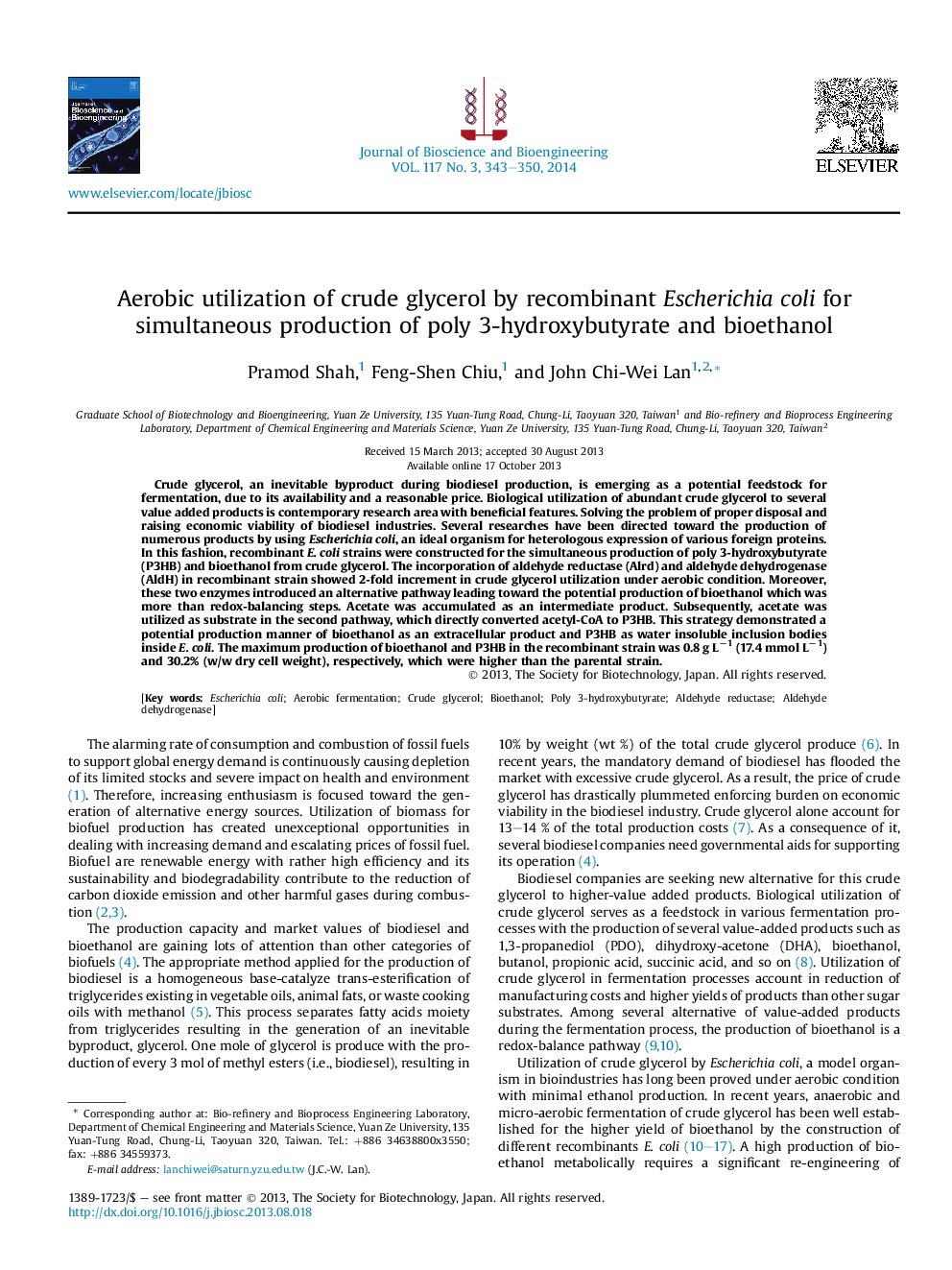| کد مقاله | کد نشریه | سال انتشار | مقاله انگلیسی | نسخه تمام متن |
|---|---|---|---|---|
| 20603 | 43182 | 2014 | 8 صفحه PDF | دانلود رایگان |

• Use of crude glycerol is beneficial for minimizing the operational cost.
• Incorporation of Alrd and AldH help in better utilization of crude glycerol.
• Dual plasmids strategy for the production of only desirable products.
• Alrd and AldH help in better yield of ethanol and P3HB content.
Crude glycerol, an inevitable byproduct during biodiesel production, is emerging as a potential feedstock for fermentation, due to its availability and a reasonable price. Biological utilization of abundant crude glycerol to several value added products is contemporary research area with beneficial features. Solving the problem of proper disposal and raising economic viability of biodiesel industries. Several researches have been directed toward the production of numerous products by using Escherichia coli, an ideal organism for heterologous expression of various foreign proteins. In this fashion, recombinant E. coli strains were constructed for the simultaneous production of poly 3-hydroxybutyrate (P3HB) and bioethanol from crude glycerol. The incorporation of aldehyde reductase (Alrd) and aldehyde dehydrogenase (AldH) in recombinant strain showed 2-fold increment in crude glycerol utilization under aerobic condition. Moreover, these two enzymes introduced an alternative pathway leading toward the potential production of bioethanol which was more than redox-balancing steps. Acetate was accumulated as an intermediate product. Subsequently, acetate was utilized as substrate in the second pathway, which directly converted acetyl-CoA to P3HB. This strategy demonstrated a potential production manner of bioethanol as an extracellular product and P3HB as water insoluble inclusion bodies inside E. coli. The maximum production of bioethanol and P3HB in the recombinant strain was 0.8 g L−1 (17.4 mmol L−1) and 30.2% (w/w dry cell weight), respectively, which were higher than the parental strain.
Journal: Journal of Bioscience and Bioengineering - Volume 117, Issue 3, March 2014, Pages 343–350